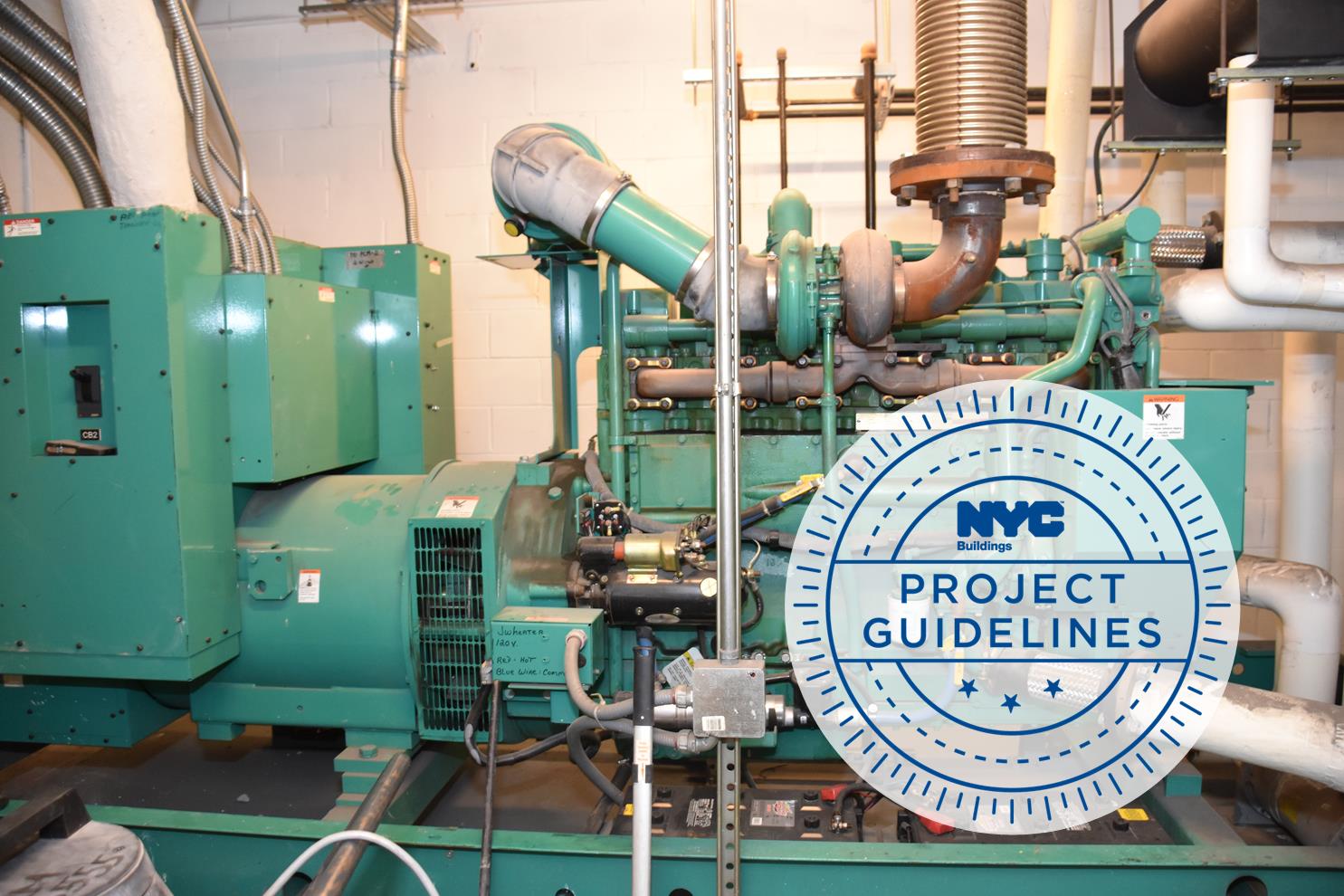
 Buildings311
Buildings311 Search all NYC.gov websites
Search all NYC.gov websites
Project Categories: Building Systems Installation & Modifications - Emergency Backup Power System

The New York City Building requires Emergency Backup Power Systems for certain buildings like high-rise buildings, covered malls, correctional facilities, places of assembly, and building systems such as elevators. See Building Code Section 2702.2.
An Emergency Backup Power System can be part of a new building, alteration, renovation, or a smaller project, i.e. a mechanical system, fuel oil storage, fire protection or sprinkler work. Automatic backup generator systems are required for certain critical life safety systems, i.e. elevators in high-rise buildings, fire protection systems, emergency lighting, or medical and life support equipment.
Major components of an Emergency Backup Power System include:
- Power Source –Typically turbine or reciprocating;
- Equipment and Devices – Inverters (e.g. lighting), automatic transfer switch (ATS) devices, and power system feeders;
- Fuel Supply – Gas or diesel fuel
- Controls – Electrical safety gear
- Other Generator Components –Exhaust fans, air conditioning
Types of Emergency Power Systems* include:
- Emergency Power Systems automatically provide power within 10 seconds of power loss for certain facilities and must be completely separate from other systems, having their own conduit runs, panels, transfer switches and dedicated areas/rooms. They provide emergency power to life-safety systems, such as egress lighting, required smoke evacuation, fire alarm systems, fire pumps, voice/alarm communications, life-support systems and elevator components.
- Legally Required Standby Power Systems automatically supply power within 60 seconds of power loss to selected loads for certain kinds of facilities. They are required by code but need not be fully separate systems. These systems facilitate egress and improve firefighter operations.
- Optional Standby Power Systems provide backup power to equipment and/or systems deemed important to the Building Owner. They can be manually or automatically engaged, and can share components and wiring with normal power or legally required standby power. They are generally used to prevent data loss, maintain communications systems, or provide human comfort during outages. Residential optional standby generators are increasingly common, providing backup electrical power to HVAC systems, security systems, and household appliances such as refrigerators, stoves, and water heaters.
*Note: This excludes Health Care Facilities, which are covered by National Electric Code Art. 517 and the Facility Guidelines Institute.*
Permanently attached cellular antennas are public utilities. A cell tower back-up generator is part of the cell tower and is NOT required to supply loads for optional standby power systems.
Get additional information on Emergency Backup Power System Project Requirements.
Project Categories:
-
Demolition COMING SOON!
-
New Buildings COMING SOON!


